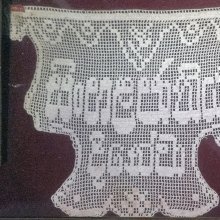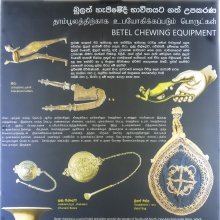Upayogin, Upayogī, Upayogi: 14 definitions
Introduction:
Upayogin means something in Hinduism, Sanskrit, Marathi, Hindi. If you want to know the exact meaning, history, etymology or English translation of this term then check out the descriptions on this page. Add your comment or reference to a book if you want to contribute to this summary article.
Images (photo gallery)
In Hinduism
Yoga (school of philosophy)
Source: ORA: Amanaska (king of all yogas): A Critical Edition and Annotated Translation by Jason BirchUpayogin (उपयोगिन्) refers to “that which is useful to the Yogin”, according to the Amanaska Yoga treatise dealing with meditation, absorption, yogic powers and liberation.—Accordingly, as Īśvara says to Vāmadeva: “[...] For one whose self-awakening has arisen, who is in every way detached and is always devoted to practice, this [adherence to sectarian emblems] is not useful anywhere. Then, the different gazing points, the various other postures and states of mind are useless to the Yogin (upayogin) [ca yogino nopayoginaḥ]. [...]”.

Yoga is originally considered a branch of Hindu philosophy (astika), but both ancient and modern Yoga combine the physical, mental and spiritual. Yoga teaches various physical techniques also known as āsanas (postures), used for various purposes (eg., meditation, contemplation, relaxation).
Sports, Arts and Entertainment (wordly enjoyments)
Source: archive.org: Syainika Sastra of Rudradeva with English Translation (art)Upayogi (उपयोगि) refers to “being accompanied” (by dances), according to the Śyainika-śāstra: a Sanskrit treatise dealing with the divisions and benefits of Hunting and Hawking, written by Rājā Rudradeva (or Candradeva) in possibly the 13th century.—Accordingly, “[...] It has been said that there are eighteen addictions. These are the outcome of the desire for earthly enjovments. [...] Vocal music consists of songs by charming voices sung with time and tune in harmony accompanied by dances (lāsya-upayogi). Experts only appreciate it. Sung on proper occasions it leads to the attainment of the four objects of life. It is patent to all how it leads to the attainment of wealth and desires. [...]”.

This section covers the skills and profiencies of the Kalas (“performing arts”) and Shastras (“sciences”) involving ancient Indian traditions of sports, games, arts, entertainment, love-making and other means of wordly enjoyments. Traditionally these topics were dealt with in Sanskrit treatises explaing the philosophy and the justification of enjoying the pleasures of the senses.
Languages of India and abroad
Marathi-English dictionary
Source: DDSA: The Aryabhusan school dictionary, Marathi-Englishupayōgī (उपयोगी).—n Useful, serviceable.
Marathi is an Indo-European language having over 70 million native speakers people in (predominantly) Maharashtra India. Marathi, like many other Indo-Aryan languages, evolved from early forms of Prakrit, which itself is a subset of Sanskrit, one of the most ancient languages of the world.
Sanskrit dictionary
Source: DDSA: The practical Sanskrit-English dictionaryUpayogin (उपयोगिन्).—a.
1) Employing, using.
2) Conducive or contributing to, serviceable, useful.
3) Appropriate, fit, proper.
4) Favourable, propitious.
5) Touching.
Source: Cologne Digital Sanskrit Dictionaries: Shabda-Sagara Sanskrit-English DictionaryUpayogin (उपयोगिन्).—mfn. (-gī-ginī-gi) 1. Appropriate, suitable. 2. Conducive or contributing to, serviceable, useful. 3. Favourable, propitious. 4. Touching, in contact with E. upayoga and ini aff. [Pagĕ9-a+ 60]
Source: Cologne Digital Sanskrit Dictionaries: Benfey Sanskrit-English DictionaryUpayogin (उपयोगिन्).—adj., f. nī, i. e. 1. upa-yuj + in, Using, [Daśakumāracarita] 198, 16, Wils. 2. upayoga + in, Serviceable, [Kathāsaritsāgara, (ed. Brockhaus.)] 12, 42.
Source: Cologne Digital Sanskrit Dictionaries: Cappeller Sanskrit-English DictionaryUpayogin (उपयोगिन्).—[adjective] being employed, conducive, useful, fit, suitable; employing using (—°).
Source: Cologne Digital Sanskrit Dictionaries: Monier-Williams Sanskrit-English Dictionary1) Upayogin (उपयोगिन्):—[from upa-yuj] mfn. serving for use or application, suitable, fit, useful, convenient, [Kathāsaritsāgara; Sāhitya-darpaṇa] etc.
2) [v.s. ...] appropriate
3) [v.s. ...] favourable, propitious
4) [v.s. ...] (ifc.) using, employing, [Daśakumāra-carita]
5) [v.s. ...] touching, in contact with, [cf. Lexicographers, esp. such as amarasiṃha, halāyudha, hemacandra, etc.]
Source: Cologne Digital Sanskrit Dictionaries: Yates Sanskrit-English DictionaryUpayogin (उपयोगिन्):—[upa-yogin] (gī-ginī-gi) a. Fit.
Source: DDSA: Paia-sadda-mahannavo; a comprehensive Prakrit Hindi dictionary (S)Upayogin (उपयोगिन्) in the Sanskrit language is related to the Prakrit word: Uvaogi.
[Sanskrit to German]
Sanskrit, also spelled संस्कृतम् (saṃskṛtam), is an ancient language of India commonly seen as the grandmother of the Indo-European language family (even English!). Closely allied with Prakrit and Pali, Sanskrit is more exhaustive in both grammar and terms and has the most extensive collection of literature in the world, greatly surpassing its sister-languages Greek and Latin.
Hindi dictionary
Source: DDSA: A practical Hindi-English dictionaryUpayogī (उपयोगी) [Also spelled upyogi]:—(a) useful; helpful; serviceable; ~[karaṇa] processing; rendering serviceable.
...
See also (Relevant definitions)
Partial matches: Yogin, Yogi, Yoki, Upa.
Ends with: Anupayogin.
Full-text: Upayogita, Upayogitva, Striyopayogi, Anupayogin, Upyogi, Uvaogi, Upayukta, Vaktaci Vela, Jadajokhima, Apurvopayogin, Kalakalla, Ratabirata, Samaya, Haradamakhyala, Stri, Sandha, Kavala.
Relevant text
Search found 4 books and stories containing Upayogin, Upa-yogi, Upa-yogī, Upa-yogin, Upayogī, Upayogi, Upayōgī; (plurals include: Upayogins, yogis, yogīs, yogins, Upayogīs, Upayogis, Upayōgīs). You can also click to the full overview containing English textual excerpts. Below are direct links for the most relevant articles:
Bhajana-Rahasya (by Srila Bhaktivinoda Thakura Mahasaya)
Text 17 < [Chapter 6 - Ṣaṣṭha-yāma-sādhana (Sāyaṃ-kālīya-bhajana–bhāva)]
Shakti and Shakta (by John Woodroffe)
Chapter XII - Alleged conflict of Śāstras < [Section 1 - Introductory]
Natyashastra (English) (by Bharata-muni)
Reverberations of Dharmakirti’s Philosophy (by Birgit Kellner)


